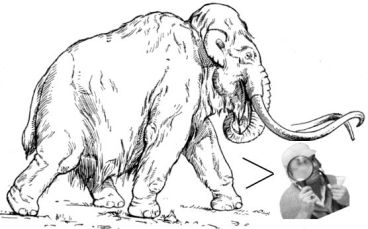See this post for the ground rules of this Face/Off.
 When a charity does a million things in a million places, it’s futile to try to understand all of it, or even 80%. Speaking very practically, we’ll be taxing the heck out of their development officers, asking for so much information – to say nothing of what we’ll be doing to ourselves. And who cares what all their programs are, anyway? We all know that funders have a tendency to impose their priorities on others. So an org is doing an AIDS program in Kenya because some foundation made them back when AIDS was hip. What does that tell us about the organization’s approach, effectiveness, and more importantly, what they’re going to do with future funds?
When a charity does a million things in a million places, it’s futile to try to understand all of it, or even 80%. Speaking very practically, we’ll be taxing the heck out of their development officers, asking for so much information – to say nothing of what we’ll be doing to ourselves. And who cares what all their programs are, anyway? We all know that funders have a tendency to impose their priorities on others. So an org is doing an AIDS program in Kenya because some foundation made them back when AIDS was hip. What does that tell us about the organization’s approach, effectiveness, and more importantly, what they’re going to do with future funds?
Forget what an organization has done: I want to know what they will do. I want our application to ask not “Tell us about your existing programs,” but “What are your upcoming priorities? What projects come next?”
The obvious objection is that we want to find activities that are proven, effective, and scalable – not speculative ideas that have never been tried. But I think for a good organization – or at least one in line with our priorities – what comes next is what’s proven, effective, and scalable. They won’t be able to show their results for the exact program and region under discussion – but they must be able to show that similar programs have worked in similar places. And, we should demand that they justify what they’re doing as opposed to all the other things they could be doing; an organization that wants to fight malnutrition should explain why it isn’t targeting diarrhea – and vice versa.
The organization whose future plans make the most sense, have been thought through the best, and are most similar to things that have already worked is the organization I want to fund. And organizations are used to answering this question. It’s easier for us, easier for them, and more fair: judge a charity based on its future, not its past.
